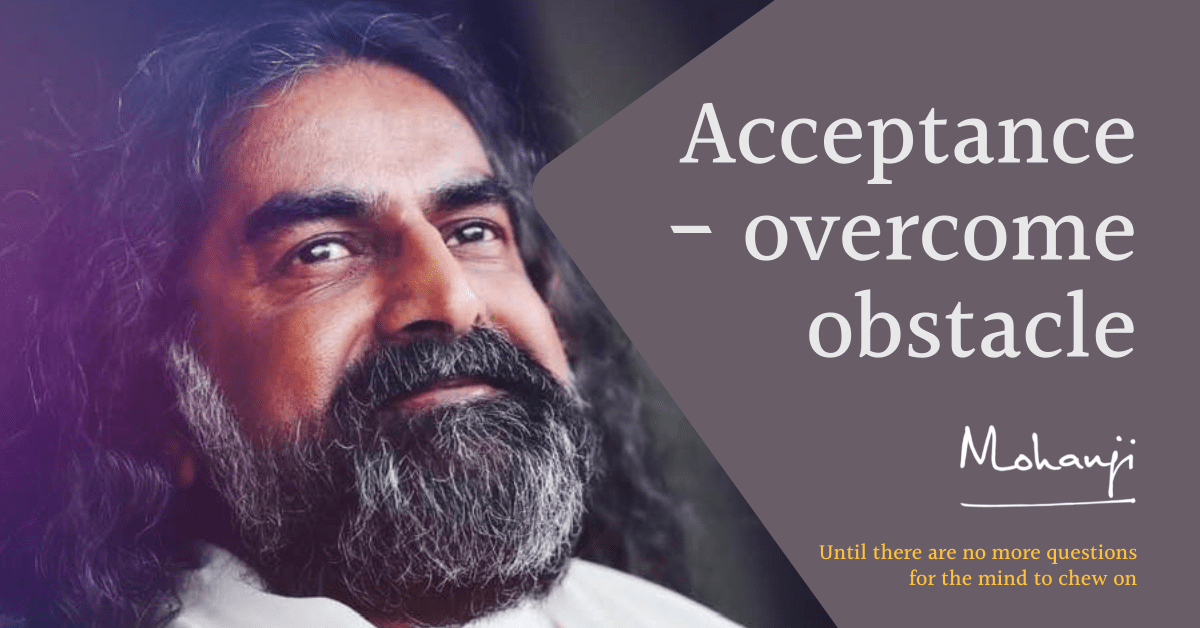How to overcome the obstacle in accepting ourselves? | Mohanji
Acceptance – usually, we have no problem in accepting our strengths, and we would like to even tell about it to the world.
So that side is okay. We have only a problem in accepting our weaknesses or strengths because we compare with other people. Or sometimes the society says: “You should be like that, you should be like another.” This is where we have a conflict.
Acceptance of yourself
One is that you have your natural, spontaneous, free side; the other side is that society tells you how you should be. Society means education, parents, religion, whatever it is. This is where the conflict is, mostly.
Obstacle
There is one distinct part in us: our natural, how you naturally are – something which is effortless for you. You don’t have to force yourself to do it; there’s no pressure. That is natural; you are, you are very natural there. It’s not even about habits or likes and dislikes or those kinds of stuff. It’s just you being natural, naturally kind, naturally compassionate, naturally loving. That natural aspect, when that is restricted, is where the conflict comes. For the sake of society, for the sake of somebody, you try to compromise. That’s where the non-acceptance happens.
On one side, you are doing it for the sake of something; on the other side, that’s not you. So, you already divided yourself into pieces. It is very important for you to come back to your natural state. The natural state means the effortless state, a state of being effortless, spontaneous, flowing.

Manana – Introspection
There is a lot of introspection. That is why the scriptures talk more about introspection, which is “Manana” in Sanskrit. You introspect deep within before you meditate. We are busy meditating, we hardly check if we are all right and aligned, but we are busy doing some practices. That’s also escapism many times.
What you need to do is to start looking within. That is why I said: “Life is driven by inclinations and tendencies.” Look at everybody. Everybody’s life is driven by inclinations and tendencies, or both are the same more or less. If you understand your tendencies, you understand yourself. It’s very easy to know. You look at yourself; what is your tendency.
A person has a particular tendency. Its expression could be alcohol or cigarette, but there’s a tendency for something. And that leads to addiction. In things like that, there is always a cause.
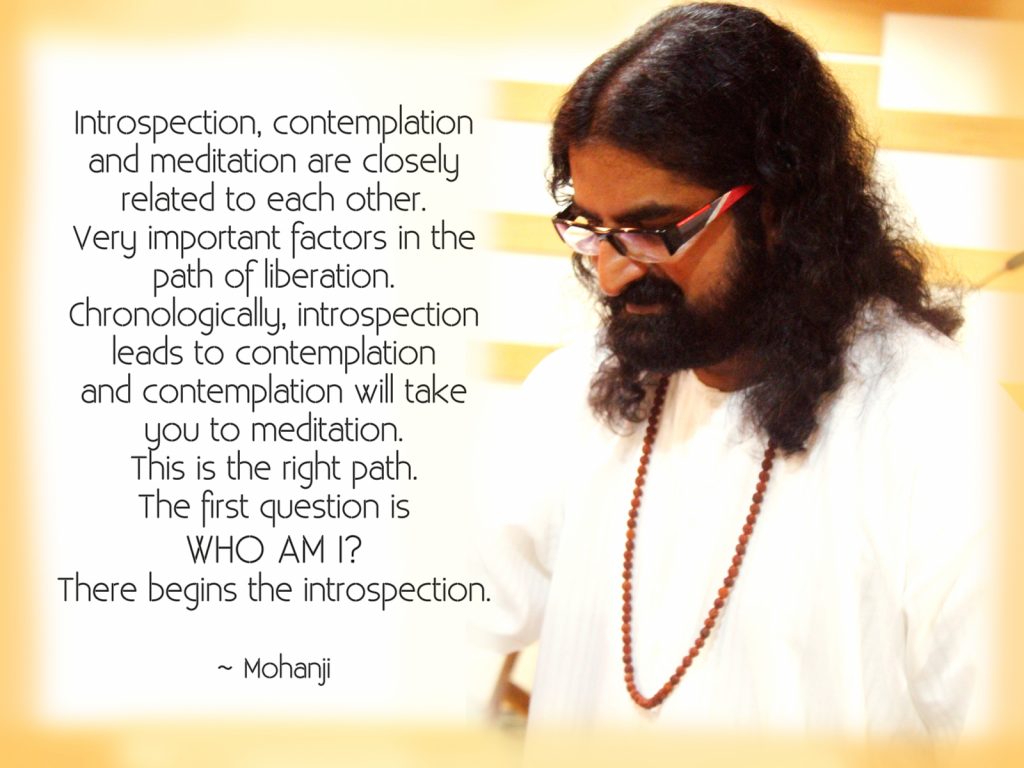
Acceptance of inclinations and tendencies
So, if you’re, if you’re really, really concentrating into yourself, and you realise these are my inclinations, these are my tendencies, this is natural for me, this is unnatural for me, then you realise yourself, you have come into full contact with yourself.
We must spend that time. More than meditating on some theory, you must spend this time, which will be much more effective in life than any practices, whether meditation, Kriya, or yoga. But this connection which you make with yourself is the foundation.
We diagnose ourselves: “I have a lot of anger sitting in me.” Okay, that’s a symptom; that’s a sign of something. Maybe behind the anger, there could be disappointment about something. And behind the disappointment, there could be an expectation.
What exactly is the root cause?
Expectation, about something or somebody or with somebody. That did not happen, then disappointment happened, and the expression is anger. That is what society sees. This man is angry. Then society responds to you with anger.
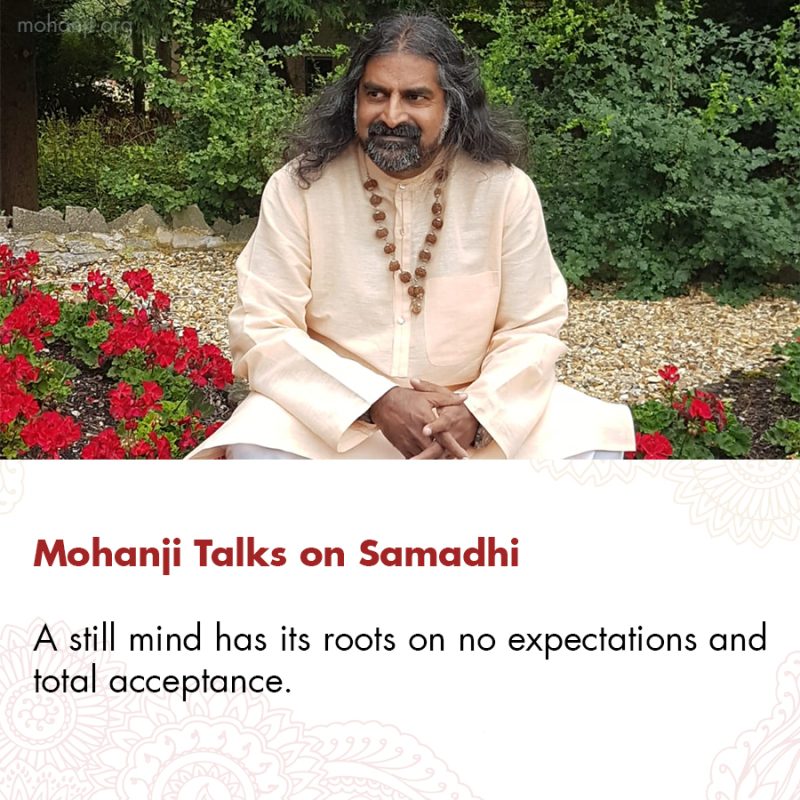
Take most of the crimes that we see in the world. This tendency was there long before the actual crime took place, and it was ignored, mostly ignored. And it developed and developed and developed, and finally, it became a crime. Then immediately the police catch them as a criminal. Branded: “criminal”. Then the court judges: “This is a criminal.” Again, one more stamp, “criminal”. Then he’s put in jail as a criminal.
So a person, a tendency, became a state, a situation. Do you see how it evolves? There is a root cause for everything. What I mean to say is that, at the childhood level, these tendencies are visible. As children, they don’t hide. Every inclination, every tendency they display. As they grow older, they have more means to execute them—a larger area to experience.
Prejudices
That’s all right, but their tendencies are there, inclinations are there. If you sit down and look at your own inclinations: “In which situations was I getting angry? In which situations was I judging people?” When you look at somebody, you immediately have some prejudice in mind. We don’t look at anybody as fresh. “Oh, this guy, I’ve seen him. He’s like that guy.” He has nothing to do with that guy, but we associate already.
So in our mind, there is a lot of processing happening, taking from the data, which is already sitting there. We take it from the data, which is already sitting there, and then put it on somebody else who has nothing to do with it. We don’t experience that reality, truth as it is, because we don’t give it a chance. We look at everybody through the eyes of prejudices.
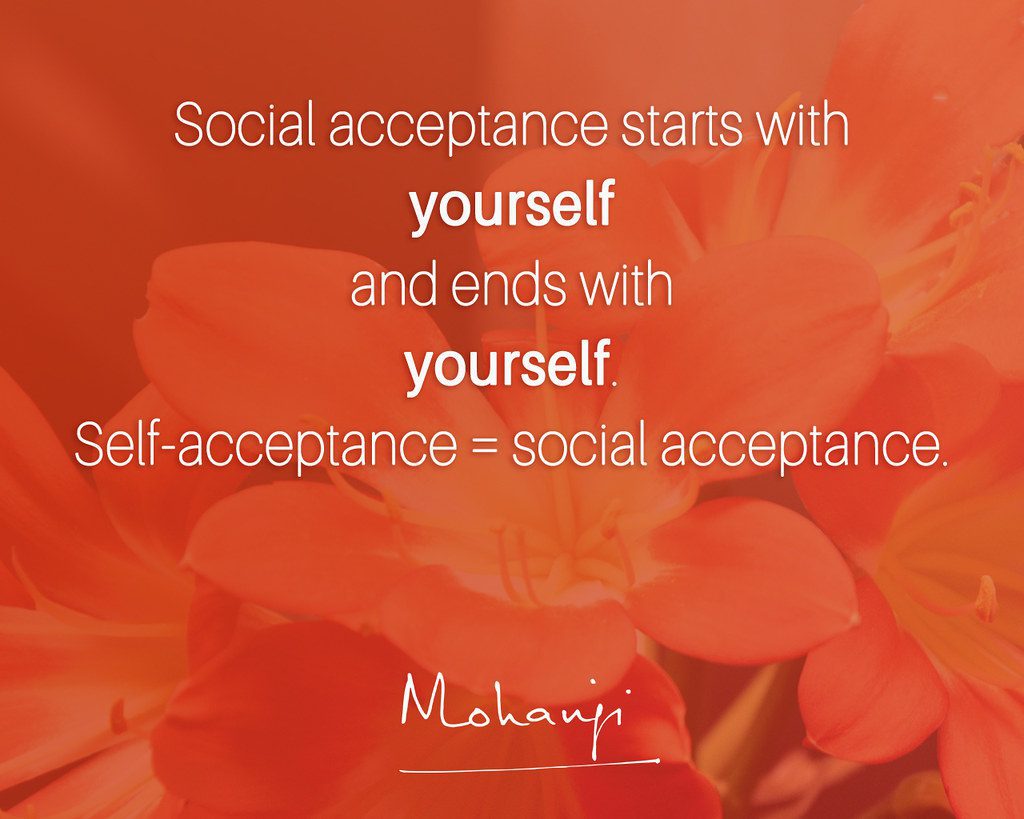
Social Acceptance
This is one side, another side is you had a good relationship. You liked it; you connected, you have a good frequency, everything is smooth, beautiful, then somebody says: “Are you sure?” They may not even tell you this is right or wrong. One word is enough, one sentence, one question mark.
This is how the journalists do. Not the South African Television, other people. Not all journalists, some journalists. Do you know what they do? They don’t tell this is, this is the truth, but write: “Is he the criminal? “You know, they’re not telling that he’s the criminal, nor they’re saying he’s not the criminal. Then the rest you read, in between the lines.
Truth and opinions
This is how society crucifies people; you know, media crucifies people. This is how they work. For example, I want to take revenge on you. I said: “Hey, look here, this gentleman did this, did that,” according to my opinion. It’s all opinions; the world is only talking opinions, not truth. We think that is the truth, but 80% of what we hear are opinions; that is individual’s opinions, not truth.
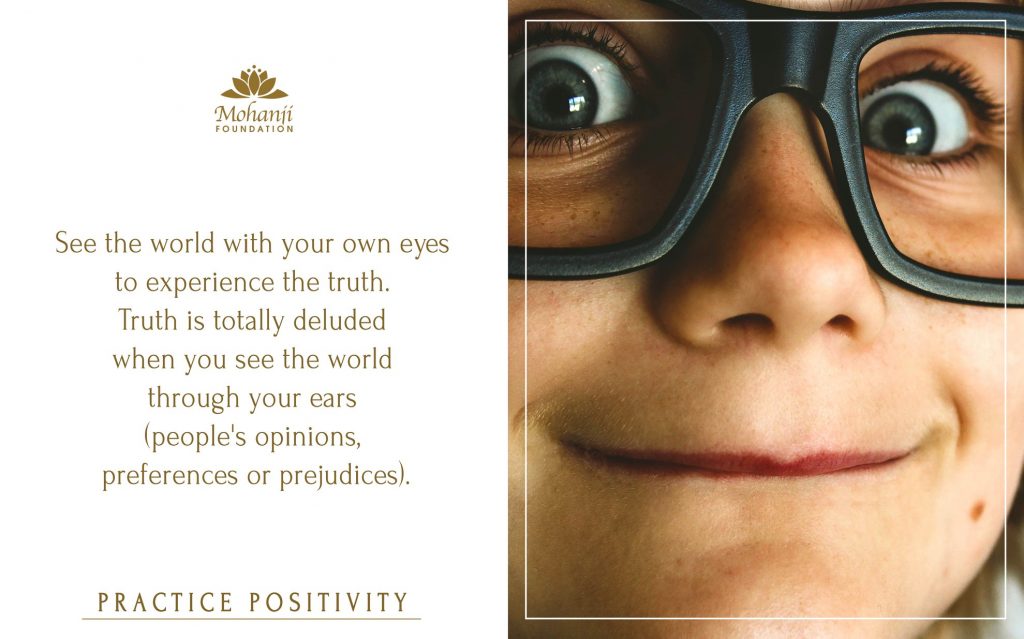
Truth is probably sometimes completely different. We may not even know the truth; even history are the opinions of people who thought that way. Like you see reality as you are. So, when you say something, it will be your version. It may not be the truth. So as we see it, we are telling, and that is how we make judgements, you know, the whole world, all these calamities are connected to opinions and judgments. So, it is important to understand where we stand.
The world is as it is; you can’t do anything about it, let it be. 7.5 billion people, 7.5 billion walking, talking concepts, let it be. But we can check what we are, our inclinations, our tendencies, what resonates with us, what does not resonate with us, so we can figure out approximately what we are.
There your meditation begins. That’s when your actual meditation starts. Otherwise, it’s an activity, it’s a practice somebody has told you to do, and you’re doing it, but you are not connecting. The moment you start feeling, recognising, accepting, and assimilating yourself, then everything you do will make sense.
Transcribed by Ulla Bernholdt
Proofread by Rekha Murali

